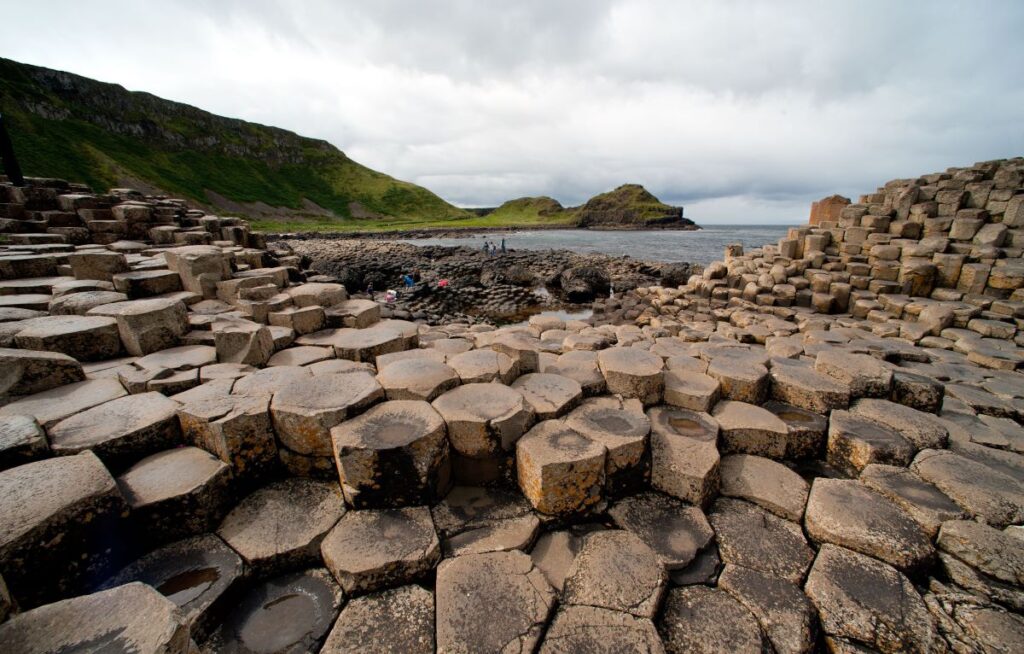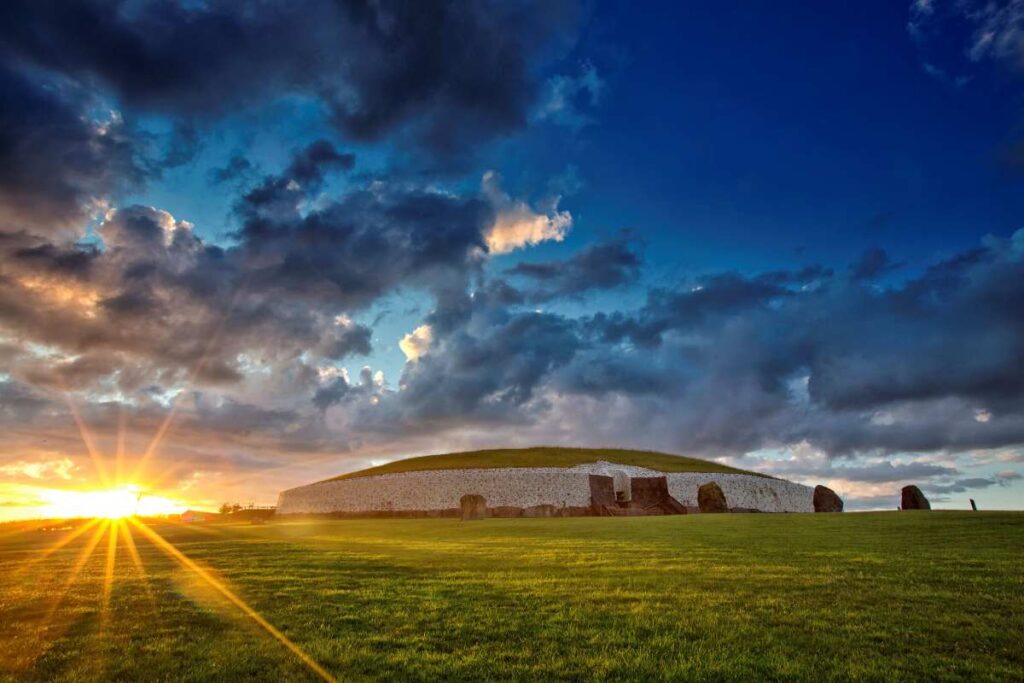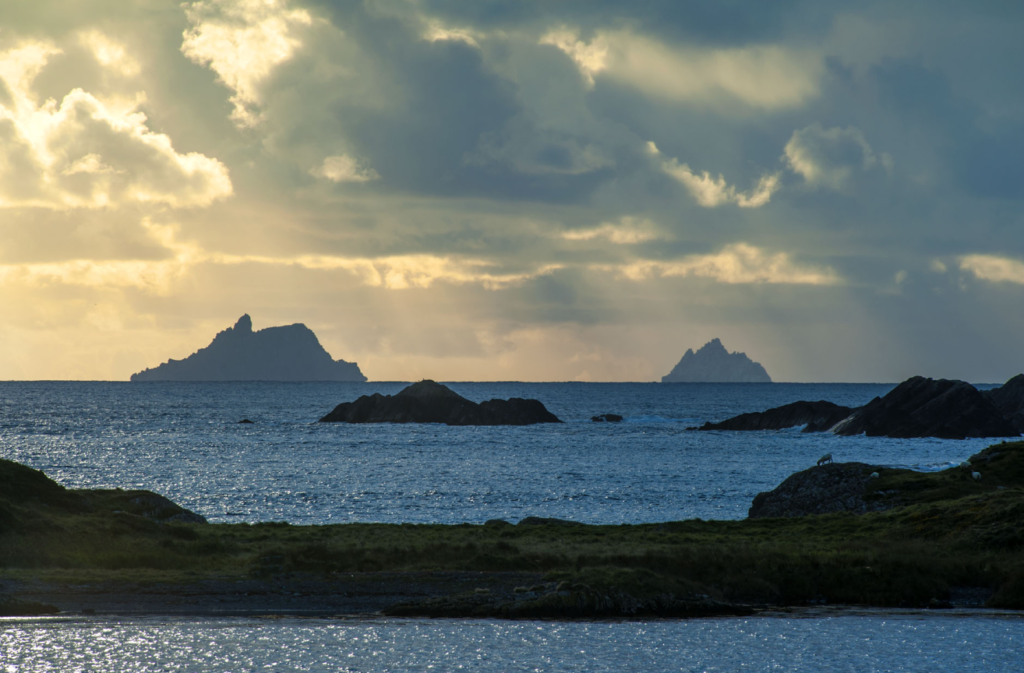Explore the island of Ireland’s awesome UNESCO sites
The island of Ireland’s UNESCO sites are destinations of world-class natural and cultural heritage that should top your to-do list.
Despite being small, the island of Ireland looms large when it comes to the number of UNESCO designated sites and cities it harbours. From ancient geological phenomena to vibrant cities steeped in culture, these sites are don’t-miss destinations.
UNESCO World Heritage Sites

Northern Ireland’s Giant’s Causeway is an other-worldly landscape of hexagonal stone columns that formed as a result of violent volcanic activity over 60 million years ago. Needless to say, the unique stone formations gave rise to many colourful myths, one of which – the story of the giant Fionn mac Cumhaill – gave the site its name. Discover the facts and the fiction in the state-of-the-art visitors centre.


In County Meath, the Brú na Bóinne Complex is an archaeological ensemble of monuments that has Europe’s largest and most important concentration of prehistoric megalithic art. Most famous is Newgrange, a portal tomb that is older than the pyramids and famed for its alignment with the winter solstice when a shaft of sunlight illuminates the inner chamber.


On the Wild Atlantic Way, the remote sixth-century monastic sanctuary of Skellig Michael is the island’s third UNESCO World Heritage Site. The stone beehive homes built by the monks still survive on this jagged, wave-lashed island off the coast of County Kerry. Its unique character has inspired many. George Bernard Shaw called it “a part of our dream world” and it was chosen as a shoot location for Star Wars: The Force Awakens.
UNESCO cities
Three of the island’s cities have UNESCO status: Belfast is a UNESCO City of Music; Dublin is a UNESCO City of Literature; and Galway is a UNESCO City of Film.
Belfast has a rich musical history that spans diverse genres from traditional to punk. The city stages a number of music festivals in the summer including the mighty Belsonic which attracts the biggest names in the music industry. A raft of music walking tours include the Belfast Traditional Music Trail and Belfast Music Walking Tour which delves into the stories of some of the city’s most famous musicians such as Van Morrison, Gary Lightbody and punk legends Stiff Little Fingers. Vibrant music venues such as the Limelight, Oh Yeah Music Centre and the Empire mean that there is always a Belfast beat to be enjoyed.
In Dublin, literature takes centre stage. Home to three of Ireland’s four Nobel Prize winners for literature, the city has also inspired such literary giants as Jonathan Swift, Oscar Wilde and James Joyce. The Museum of Literature Ireland (MOLI) is a treasure trove of Ireland’s literary heritage past and present, from the earliest storytellers to contemporary writers.
An alternative way to discover Irish literature is on the highly entertaining Dublin Literary Pub Crawl. Dublin also hosts a number of literary festivals including the annual Bloomsday Festival when fans of James Joyce and his iconic novel Ulysses flock to the city.


Bohemian Galway stages an annual Film Fleadh that was named by MovieMaker magazine as one of the 25 coolest film festivals in the world. Attracting filmmakers from all over the planet, it presents new and classic cinema alongside masterclasses and seminars. The city and its hinterland have also provided the dramatic backdrop for a number of big screen movies including Into the West, Marley and Me, Tristan and Isolde, The Guard and most recently The Banshees of Inisherin, which was partly filmed on Inishmore, one of the beautiful Aran Islands.
UNESCO Global Geoparks
Dramatic landscapes and unique geology have given the island two UNESCO Global Geoparks.


Cuilcagh Lakelands Geopark straddles the border between counties Fermanagh and Cavan and encompasses rugged uplands, lakes, forests and dramatic underground caves. Highlights of the area include the boardwalk that climbs to a viewing platform on the mountain plateau and the tour of the subterranean Marble Arch Caves where amazing rock formations can be seen.


The island’s newest geopark is Mourne Gullion Strangford which is unique amongst UNESCO Global Geoparks as it tells ‘A Tale of Two Oceans’ across 400 million years of geological history. Stretching from the tranquil waters of Strangford Lough across the granite-topped Mourne Mountains to the rugged Ring of Gullion and beyond, it is a varied and beautiful landscape beloved of hikers.
ARTICLE C/O www.ireland.com

































